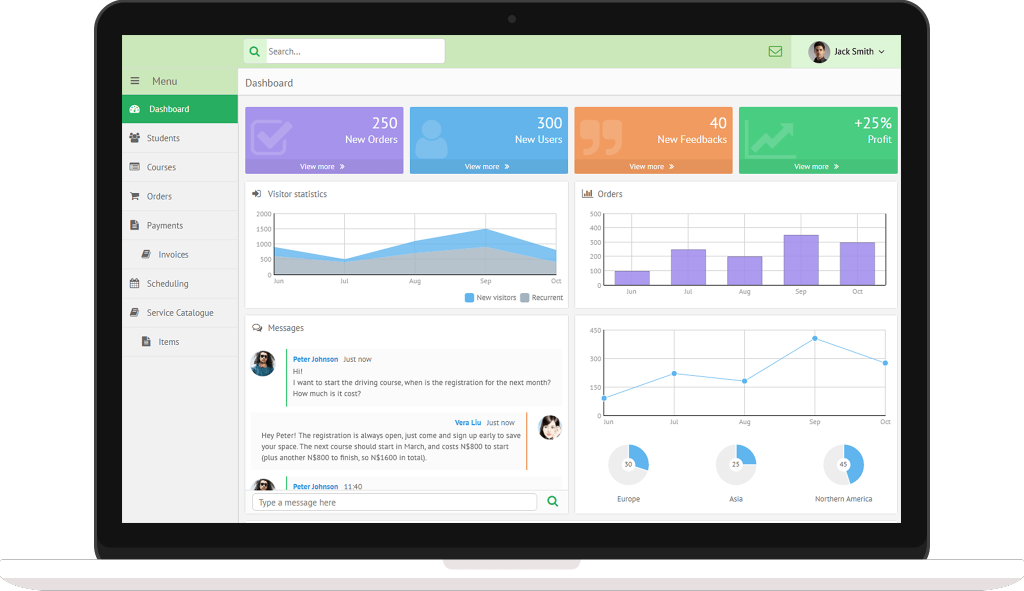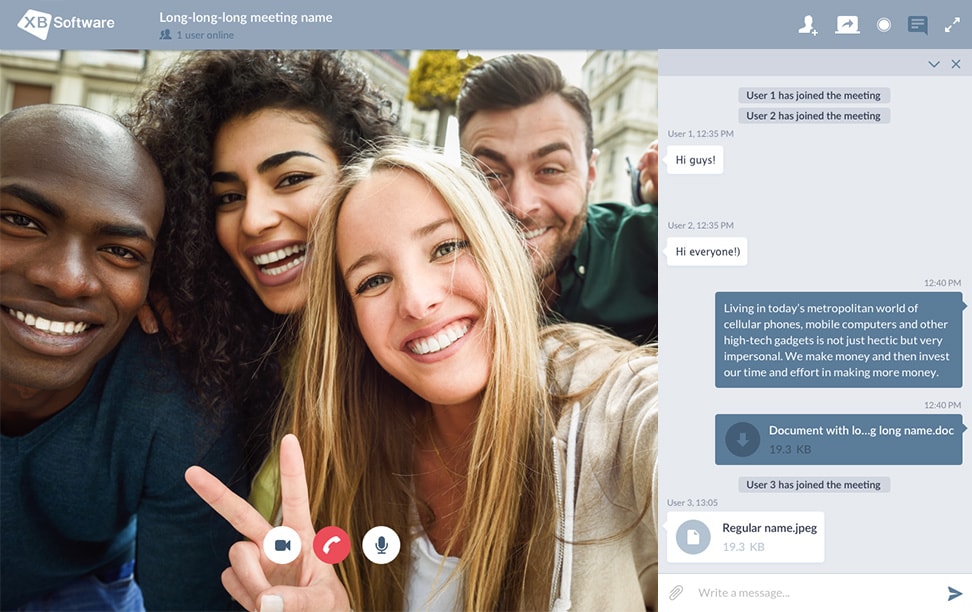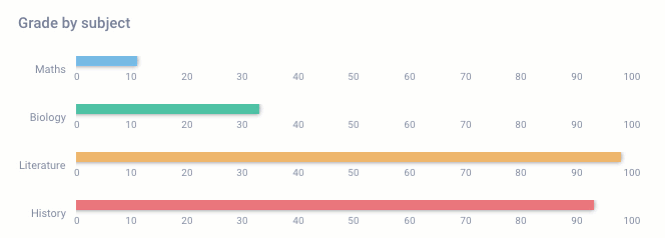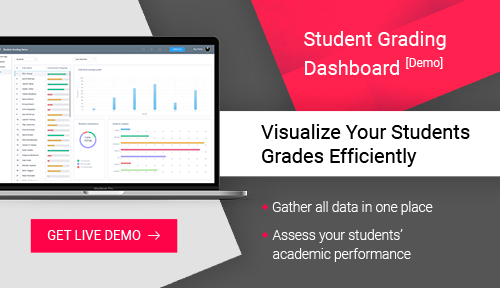Modern disruptive technologies have changed almost every aspect of our everyday lives. Education is not an exception to this rule. The most promising disruptive innovations such as Augmented Reality (AR) or Artificial Intelligence (AI) are not mainstream yet, but they’ll change the very fabric of education sooner or later.
At the time, more widely available technologies such as web-based video chats are widely adopted, and we can assess their influence. In this article, we’ll consider how modern disruptive technologies affect the education sector, their major benefits, and some use cases.
Online Learning
Probably, the first thing that comes to mind when we consider how disruptive technologies changes education is the capabilities of online learning. This disruptive technology has already transformed the way of how educational organizations provide their services. Online learning offers new opportunities both for students and educators. This disruptive technology can involve those people that don’t have access to traditional forms of education due to some reasons. Since online learning is easily accessible, parents, fully-employed people, and people with disabilities can use this opportunity to get an education without leaving their homes.
Let’s consider the web-based service for online booking that allows students to book and pay for educational courses online:

This application allows ordering and paying for any classes online with a single mouse click. Users can review the details of particular courses such as the duration of the training, number of lessons, and other details. The overall cost of education calculates automatically and changes instantly in case of changes. For people with special needs, there’s a possibility to hire a teacher having skills of working with students with a particular type of disability.
Chat-based Collaboration Platforms
Another important disruptive technology in education is communications platforms. For example, web-based video chatting apps allow demonstrating presentations in real-time mode to small audiences, which helps to make the learning process easier and more social.
Video communication allows users from all around the world to participate in the educational process. Additionally, professors can have experts from their field join the discussion online to speak with students directly. Advancements in online learning technology are helping make higher education more impactful and accessible to more people than ever before.
Video chatting technology can be used in education. A video chat app is an intuitive web-based solution with the possibility to hold audio/video and text conversations:

Chat rooms for up to five users allow reading lectures for small groups of students. In case of need for individual sessions, users can initiate a new person-to-person chat. Using screen-sharing technology, the teacher can demonstrate presentations to the whole class. The app also allows recording of the lessons. It means that the content remains accessible for further education even after being delivered.
Competency-based Education
Competency-based Education (CBE) is the approach implying that all students enter the educational program with different skills, and each of them has different speed of learning. The primary task is to measure these differences and create adaptive learning programs. The goal is to increase student engagement in education and avoid the situation when students have to learn what they already know.
CBE allows making the educational process more individual-focused, which results in more efficient learning. If a learner needs more time to focus on a particular topic, CBE systems allow this need to be precisely measured. This disruptive technology in education has enabled pedagogy to meet the needs of students that don’t fit match the strict criteria of a “traditional” learner.
Custom eLearning development companies can create business Intelligence tools providing efficient ways of analyzing data. Educational organizations can use student dashboards to assess the educational progress of a specific learner. For example, a bar chart can display a student’s average grade for different subjects. Such form of data representation is more easy-to-read than a report card with ratings. To make it even more informative, developers can add a radar chart that displays all the grades simultaneously:

Such an approach allows quickly to assess the student’s academic performance and understand whether he has talents in one area or another.
Looking to the Future: Using VR, AR and AI in Disruptive Education
In addition to solutions that seem to be more or less obvious, there are some that turn the education process into a sci-fi movie. VR, AR, and AI are the technologies that have the potential to transform the educational process completely. Unfortunately, these technologies are not widely represented at the moment, but they still deserve our attention.
Study the Structure of the Star or Human Body with VR
At the moment, Virtual Reality (VR) is mostly about gaming and not education. Nevertheless, the potential of personalized approach and access to the Internet allow this disruptive technology to bring an excellent experience of complete immersion in the educational process.
VR allows recreating very cheap yet realistic scenarios useful for those who study medicine, archeology, physics, and other subjects. One of the fascinating cases of applying VR in disruptive education is the use of Microsoft Hololens in medical schools. This disruptive technology allows students to see a 3D model of how the human body functions.

Image source: The Medical Futurist
Today, the overall number of VR devices in education stays pretty low due to the relatively high price. This factor is especially significant for developing countries. But like in the case of any other cutting-edge, disruptive technology, VR will become more and more affordable during the years which will serve its wide distribution.
Adding New Layer to Reality with AR
Augmented Reality (AR) is another disruptive technology that is barely adopted in education but has enormous potential. AR allows adding a new layer of information to physical reality using a smartphone or tablet. This fact makes AR a more affordable option comparing to VR, which was considered earlier.
With AR in education, learners can get the possibility to understand the concepts better thanks to the use of 3D models. Using this disruptive technology, teachers can provide attractive presentations that will attract students’ attention even in the case of an uninteresting topic.

Image source: BBN Times
AR in education allows decreasing the need for hard copy notes hated for their intention to get damaged or misplaced. This disruptive technology helps to increase the excitement and informativity of learning. Learners can learn any time they want without getting bored. Also, there are no big spendings on equipment which makes AR a very affordable option.
AI
Artificial Intelligence (AI) can use the algorithms that will help to personalize the learning experience. AI systems can learn how a particular learner interacts with knowledge and analyze the needs of an individual or the whole class. At the current level of technological development, AI systems in disruptive education already can do personalized tutoring and moderate discussions.

Image source: University of Sussex
Artificial intelligence gets smarter each year, which allows assuming that one day, we’ll witness AI that complements a human teacher or even teach and interacts with learners itself. Pearson, the British education company, predicts that this disruptive technology will provide students with instant feedback during the learning process. Also, it’ll have the possibility to assess the educational possibilities of learners and even their mood.
Conclusions
Technologies change the habitual way of doing things in different spheres of our lives. Education is not an exception to this rule. Applying modern disruptive technologies in education, you can achieve the following benefits:
- Efficient recording and sharing of educational materials
- Personalized learning
- Automated student data management
- Efficient analytics and reporting
- More profound progress evaluation
Disruptive technologies provide the possibility to get a modern education to those people who can’t learn in traditional educational institutions due to scheduling issues. Web-based software allows applying for the services of educational organization and learning without leaving your own house. Chat-based collaboration platforms improve the interaction of students. Competency-based education allows creating educational programs according to the individual possibilities of a particular student. Such technologies as Artificial Intelligence only begin to apply in education, but their potential gives grounds to hope for great prospects. Software firms that provide custom software development services can implement one of the described solutions adapted for the needs of a particular educational institution.
